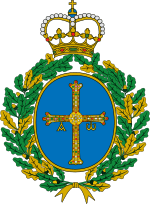Goethe-Institut
The Goethe-Institut (German: [ˈɡøːtə ʔɪnstiˌtuːt], GI, "English: Goethe Institute") is a non-profit German cultural association operational worldwide with 159 institutes, promoting the study of the German language abroad and encouraging international cultural exchange and relations. Around 246,000 people take part in these German courses per year.
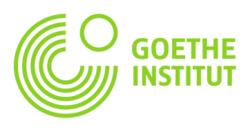 | |
| Founded | 1951 |
|---|---|
| Founder | Government of Germany |
| Type | Cultural institution |
| Location | |
Area served | Worldwide |
| Product | German cultural and language education |
Key people | Prof. Dr. h.c. Klaus-Dieter Lehmann (President), Johannes Ebert (Secretary General), Rainer Pollack (Business Director) |
| Website | http://www.goethe.de/enindex.htm |
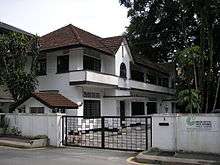
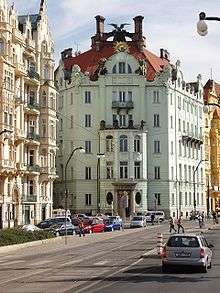
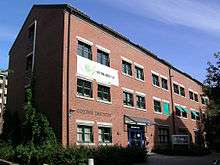
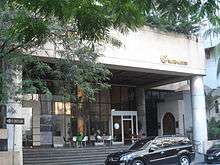
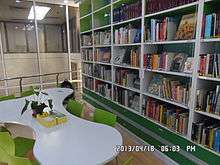
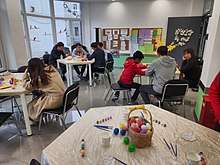
The Goethe-Institut fosters knowledge about Germany by providing information on German culture, society and politics. This includes the exchange of films, music, theatre, and literature. Goethe cultural societies, reading rooms, and exam and language centers have played a role in the cultural and educational policies of Germany for more than 60 years.[1]
It is named after German poet and statesman Johann Wolfgang von Goethe. The Goethe-Institut e.V. is autonomous and politically independent.[2]
Partners of the institute and its centers are public and private cultural institutions, the federal states, local authorities and the world of commerce. Much of the Goethe-Institut's overall budget consists of yearly grants from the German Foreign Office and the German Press Office. The relationship with the Foreign Office is governed by general agreement. Self-generated income and contributions from sponsors and patrons, partners and friends broaden the scope of the work of the Goethe-Institut.
- 1952: The first Goethe-Institut opens in Athens.
- 1953: The first language courses run by the Goethe-Institut began in Bad Reichenhall. Due to growing demand, new centres of learning were opened in Murnau and Kochel, the focus of selection being on towns which were small and idyllic and which showed post-war Germany at its best. Lessons were taught from the first textbook developed by the Goethe-Institut, the now legendary "Schulz-Griesbach".
- 1953–55: The first foreign lectureships of what was the German Academy were taken on by the Goethe-Institut. Responsibilities include German tuition, teacher training and providing a program of cultural events to accompany courses.
- 1959–60: On the initiative of the head of the arts sector of the Foreign Office, Dieter Sattler, the Goethe-Institut gradually took over all of the German cultural institutes abroad.
- 1968: Influenced by the student revolts of the late 1960s the Goethe-Institut readjusted its program of cultural events to include socio-political topics and avant-garde art.
- 1970: Acting on behalf of the Foreign Office, Ralf Dahrendorf developed his "guiding principles for foreign cultural policy". Cultural work involving dialog and partnership was declared the third pillar of German foreign policy. During the Willy Brandt era, the concept of "extended culture" formed the basis of activities at the Goethe-Institut.
- 1976: The Foreign Office and the Goethe-Institut signed a general agreement governing the status of the Goethe-Institut, henceforth an independent cultural organization.
- 1980: A new concept regarding the location of institutes within Germany was drawn up. Places of instruction in small towns, mostly in Bavaria, were replaced by institutes in cities and university towns.
- 1989/90: The fall of the Berlin Wall marked a turning point for the Goethe-Institut. Its activities in the 1990s were centred on Eastern Europe. Numerous new institutes were set up as a result.
- 2001: The Goethe-Institut merges with Inter Nationes.
- 2004: The Goethe-Institut established the first Western information centre in Pyongyang, North Korea (closed in 2009).[3] The Goethe-Institut Inter Nationes also reverted to its original and official name, Goethe-Institut (GI).
- 2005: The Goethe-Institut was honored with the Prince-of-Asturias Prize of Spain.
- 2007: For the first time in more than ten years, the German parliament increased the funds of the Goethe-Institut.
- 2010: Bruno Bozzetto created a new Goethe-Institut film named "Va Bene".
- 2014: A Myanmar Goethe-Institut opens
Organization
The Goethe-Institut is mainly financed by the national government of Germany, and has around 1,000 employees and an overall budget of approximately 366 million euros at its disposal, more than half of which is generated from language course tuition and examination fees. The Goethe-Institut offers scholarships, including tuition waiver, to students from foreign countries, who want to become teachers of German. One of the selection criteria for these scholarships is social or financial need.
Locations by country
- In Ghana, Togo and Cameroon, the Goethe-Institut opened its first African branches in 1961.[4]
- In Sudan, the Goethe-Institut first opened its doors on 1963, being the fourth African branch, consequently, a huge number of Sudanese college students showed interest in German scholarships and were the main reason for the big Sudanese community in Germany
- In Bangladesh, the Goethe-Institut opened at Gladstone House, 80 Motijheel Commercial Area in Dhaka in 1961. The Goethe-Institut Dhaka was relocated into its present premises in Dhanmondi (House No. 23, Road No. 02) in 1967.[5]
- In Lebanon, the Goethe-Institut operates in Rue Gemmayze (one of Beirut's most renowned streets), facing Collège du Sacré Cœur, with a remarkable number of students.
- In Iran, the Goethe-Institut opened in Tehran in 1958, but was forced to close in 1981 in a diplomatic row between the host country and Germany; the institut reopened under the German embassy in Tehran as a "point for dialogue."
- In Pakistan, Goethe-Institut has two branches. The Goethe-Institut Karachi is located at Brunton Road, Civil Lines, near the Chief Minister's Residence. It is located in an old bungalow. The Lahore chapter of the Goethe-Institut is named "Annemarie Schimmel Haus", in honour of the well-known German Orientalist and scholar, who wrote extensively on Islam and Sufism; the Annemarie-Schimmel-Haus shares its premises with the Alliance française Lahore (AF), and together they organise joint cultural events.[6]
- The Instituts in India are called Max Mueller Bhavans, in honour of the German philologist and Indologist Max Müller. They are situated in Chennai,[7] Coimbatore,[8] Pune, Mumbai, New Delhi, Kolkata, and Bangalore (Bengaluru).
- In Indonesia, there are two Goethe-Institut: in Jakarta and Bandung, and a Goethe-Zentrum in Surabaya.
- In Kenya, there is a Goethe-Institut, formerly the German Cultural Center, located in the headquarters of the Maendeleo Ya Wanawake building. The Goethe-Institut is adjacent to the Alliance Française in Nairobi.[9]
- In the Philippines, a Goethe-Institut is currently located at Makati City where it was moved from its former location in Quezon City.
- In the US, there are several Goethe-Instituts including the Goethe-Institut, New York and the Goethe-Institut Washington.
- In Nigeria, there is a Goethe-Institut learning center for those who are studying German at the University and those who want to learn the language. The center is located at Lagos Island, Lagos.
- In Britain the Goethe-Institut has a flagship presence in London's South Kensington area and other offices in Glasgow and in Kentish Town in North London.
Online and Blended Learning Courses
The Goethe-Institut offers e-learning courses as well.[10] In fact, as a result of the COVID-19 pandemic that struck the world in 2020, when most governments imposed stay-at-home and/or work-from-home lockdown orders on their citizens, Goethe-Institut Singapur introduced a series of Blended Learning courses, in order to keep German language-learning going. According to Goethe Institut's Singapore website, Blended Learning is described as follows: "Blended Learning offers you the best of both worlds: the flexibility of an online course and the direct exchange with the teacher and the group in the classroom. At the computer you will practice your reading, writing and listening skills and closely interact with other students in forums. During your lessons in the virtual classroom, you will apply what you have learned and practice your conversation and pronunciation skills. This course combines 50% self-study with 50% interaction in class."[11]
Exams
The institute has developed a series of exams for learners of German as a foreign language (Deutsch als Fremdsprache, DaF) at all levels: A1 up to C2. These can be taken both in Germany and abroad and have been adapted to fit into the Common European Framework of Reference for Languages (CEFL), the standard for European language testing. There is also one exam, the Großes Deutsches Sprachdiplom, which is at a higher level than the highest CEFL level.[12] Below is a table of the basic Goethe-Institut exams as they fit into the scheme:[13]
| CEFL level | Goethe-Institut exam | Instructional hours (45 minutes) needed |
|---|---|---|
| C2 | Goethe-Zertifikat C2: Großes Deutsches Sprachdiplom | 1,000 |
| C1 | Goethe-Zertifikat C1 (Prüfung Wirtschaftsdeutsch) | 800–1,000 (both) |
| B2 | Goethe-Zertifikat B2 (Zertifikat Deutsch für den Beruf) | 600–800 |
| B1 | Goethe-Zertifikat B1 (Zertifikat Deutsch) | 350–650 |
| A2 | Goethe-Zertifikat A2/ Fit In Deutsch 2 | 200–350 |
| A1 | Goethe-Zertifikat A1: Start Deutsch 1/Fit In Deutsch 1 | 80–200 |
In 2000, the Goethe-Institut helped to found the Society for Academic Test Development (Gesellschaft für Akademische Testentwicklung e.V.). The resulting TestDaF exams are run by the TestDaF-Institut in Hagen. The tests are supported by the German Academic Exchange Service (DAAD) and are aimed at people who would like to study at German universities, academics and scientists. The TestDaF can be taken in Germany as well as in 65 other countries.
In addition there is the Green Diploma to acquire and prove German as a foreign language teaching qualifications.[14]
Awards given
The two US-related annually granted awards for literature translations from German into English are: the renowned Helen and Kurt Wolff Translator's Prize, and the Gutekunst Prize of the Friends of Goethe New York which is open to college students and to all translators under the age of 35 who, at the time the prize is awarded, have not yet published.[15]
Helen and Kurt Wolff Translator's Prize
Goethe Medal
Once a year, the Goethe-Institut awards the Goethe Medal, an official decoration of the Federal Republic of Germany. It honours foreign personalities who have performed outstanding service for the German language and international cultural relations. The Goethe Medal was established by the executive committee of the Goethe-Institut in 1954 and acknowledged as an official decoration by the Federal Republic of Germany in 1975.
Goethe-Institut Award for New Translation
The Society of Authors and the Goethe-Institut, London administer the biennial Goethe-Institut Award for New Translation.
Famous students
- Avi Primor (born 1935), Israeli publicist and former diplomat[16]
- Jorge Mario Bergoglio (born 1936), Pope Francis[16]
- Ian Kershaw (born 1943), English historian
- Sanmao (1943–1991), Taiwanese author[17]
- Renée Fleming (born 1959), American opera singer[16]
- Auma Obama (born 1960), journalist
Recognition
In 2005, along with the Alliance française, the Società Dante Alighieri, the British Council, the Instituto Cervantes, and the Instituto Camões, the Goethe-Institut was awarded the Prince of Asturias Award for achievements in communications and the humanities.
In 2007, it received a special Konrad Duden Prize for its work in the field of German language.[18]
See also
- German American Partnership Program
- German Australian
- Hallo aus Berlin
- Cultural Diplomacy
- Public diplomacy
- British Council
- Alliance Française
References
- Goethe-Institut looks back on 60 years of cultural exchange, 29 August 2011, Deutsche Welle, accessed 9 May 2012.
- "Das Goethe-Institut" (PDF). Bundestag. Berlin: Bundestag, Wissenschaftliche Dienste. 2006. Retrieved 25 May 2019.
- Goethe-Institut to close center in North Korea on censorship claim, 26 November 2009, Deutsche Welle, accessed 9 May 2012.
- Archived 14 December 2013 at the Wayback Machine
- "About us - Goethe-Institut Bangladesh". www.goethe.de. Retrieved 27 September 2019.
- "Goethe-Institut to start Tiruchi centre next year". The Hindu. 10 September 2010. Retrieved 11 May 2012.
- "GOETHE-INSTITUT MAX MUELLER BHAVAN CHENNAI". Goethe.de.
- "GOETHE CENTRES". Goethe.de.
- "Contact and opening hours - Goethe-Institut Kenia". www.goethe.de. Retrieved 20 February 2018.
- John George. "Deutsche Sprache - Goethe-Institut". Goethe.de. Retrieved 26 May 2015.
- "Standard German Courses - A1-C2 - Goethe-Institut Singapur". Retrieved 12 June 2020.
- "Goethe-Institut launches Tiruchi Centre". The Hindu. 20 January 2011. Retrieved 11 May 2012.
- "Deutschprüfungen – Unsere Prüfungen – Goethe-Institut". Goethe.de. Retrieved 26 May 2015.
- "The Green diploma training programme - Goethe-Institut Libanon". www.goethe.de. Retrieved 27 September 2019.
- "Gutekunst Prize of the Friends of Goethe New York". Goethe-Institut New York. Retrieved 25 May 2019.
- Pataczek, Anna (25 July 2013). "Deutsch lernen mit Schnäpschen". Der Tagesspiegel. Berlin. Retrieved 30 April 2019.
- Barmé, Geremie R. (2000). In the Red: On Contemporary Chinese Culture. New York: Columbia University Press. p. 110. ISBN 9780231502450.
- "Pressemitteilungen - 2019 - Goethe-Institut". www.goethe.de. Retrieved 27 September 2019.
External links
| Wikimedia Commons has media related to Goethe-Institut. |
.jpg)
